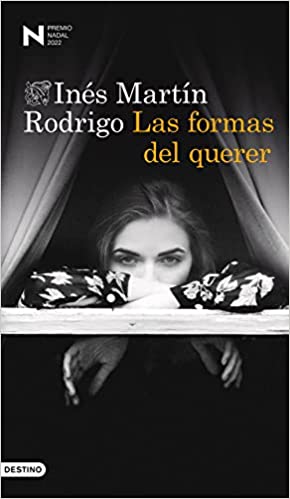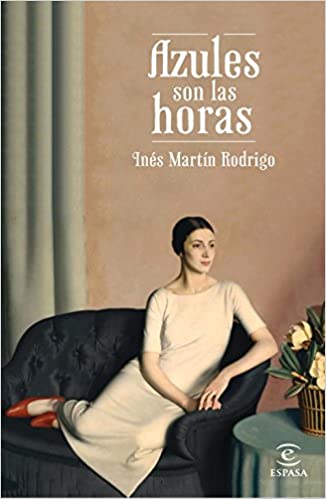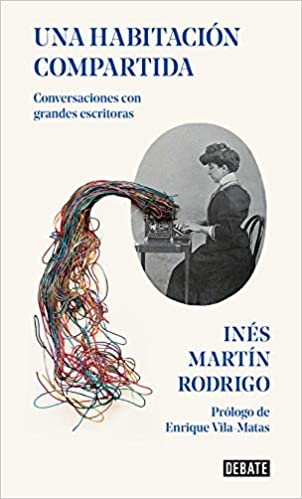The Madrid writer Inés Martín Rodrigo, Nadal award 2022, combines an emerging fictional narrative with other types of concerns that also brings us from that other equally enriching literature between the essay, the informative and the journalistic.
And it is that, as I have pointed out so many times, journalism as a profession not infrequently ends up diverging towards a more open communication. Because beyond the chronicles or opinion articles, the journalist is a writer who soaks up the news. Something very similar to what happens with any writer who nourishes his imagination from the same reality from which to compose his plots.
From Perez Reverte but also Manuel Jabois via Carmen Chaparro o Sonsoles Onega. With these mentioned, the range opens until it cannot contain so many journalists who end up reaching us as excellent communicators also in narrative fields of any kind.
Inés Martín Rodrigo represents the paradigmatic author who ends up turning the events around, the intra-stories of just seconds on television or in the press to end up extending into the detail where life is made up with all the sum of unfathomable circumstances in a journalistic report by extensive as it is.
Top 3 recommended books by Inés Martín Rodrigo
forms of love
Escapes are always forward. Because not even in what is simply marked by the physical and even less in the emotional can we remake the inopportune events of life. From that perspective, Inés presents us with a story where roots try to stop time and contain emotions in an exercise of denial that charges us with a strange melancholy of past experiences that escape even the time lived by the protagonist.
When life stops suddenly, it's time to remember. That is what Noray feels in the face of the unexpected death of his grandparents Carmen and Tomás. After his funeral, unable to face the absence of those who taught him the many forms of love, he locks himself in the family home in the town, where he grew up and was happy. There he takes refuge in words and decides to face the novel that he has been putting off for years: the history of his family, linked to that of a country too afraid to conjugate the past, from the civil war to the consolidation of democracy.
Through writing, Noray will evoke the lives of those who made his possible and will deal with his worst fears and ghosts to try to discover who he is. This story will arrive without her knowledge at the hands of Ismael, the love of her life, who will be reading, in a hospital room, the pages of that story whose end will forever mark the destiny of both.
Blue are the hours
A hyperbaton to awaken that sensation of color capable of coloring experiences. Blue with its variations towards icy tones like deep ice or evocative of summer blues. A complete range to apply the filter, depending on the moment, of a protagonism that encompasses all possible from the perspective of the strongest will.
In the midst of the First World War, just before the capture of Warsaw, a woman risked her life on the front lines. It was about the Spanish Sofía Casanova, the first war correspondent in history, who wrote her reports for ABC, visiting the trenches and denouncing the brutality of the war. Far from the tranquility that Sofia had once imagined for her life, she was in Poland when the war broke out.
The extraordinary life of this woman began when, as a child, her father abandoned her family and they were forced to move from their native Galicia to Madrid. There, he soon excelled in studies and frequented the most select circles. The day Polish diplomat and philosopher Wincenty Lutoslawski met her, he knew it had to be his wife. After a ravishing courtship, they got married and left for Poland, the first of their destinations. But over the years, Lutoslawski disowned Sofia and she had to make a living to continue feeding her daughters.
A shared room: Conversations with great writers
I believe that that certain sexist tone that seeks to undervalue any narrative made by women is becoming less and less. But a book like this never hurts to end up supporting an equality that is as evident as it is necessarily to be vindicated to the full conviction of the most unstable minds.
In a society and an imaginary still codified by patriarchy, where a very small percentage of male readers read fiction written by women, this selection of wonderful conversations reveals to us the writers who have fought, tirelessly, to live and write by their own rules. ; for overthrowing prejudices and conquering rights; to occupy, thanks to the value of their texts and beyond their belonging to a genre, the place they deserve.
Through the questions and answers that make up these intimate, fluid and intelligent talks, the reader will discover what distinguishes the thought and works of these writers, which, if they have not yet read, will make it clear to them why they should.
At the same time, reading them together brings out a common territory: being a woman and being a writer in this century, with all that that implies. And it is that, in addition to reflecting on their books and what it means to write for each of them, they investigate the relationships that articulate the triangle of literature, life and society, addressing the problems and challenges of the time that has touched them to live.
From Carmen Maria Machado, the youngest, to Ida Vitale, the oldest, through Zadie Smith, Anne Tyler, Margaret Atwood, Elena Poniatowska, Siri Hustvedt and many more, this is a book to enter the rooms of the great writers of our time, unique women who have known how to weave the threads of their writings and their lives with genius, authenticity and courage.



